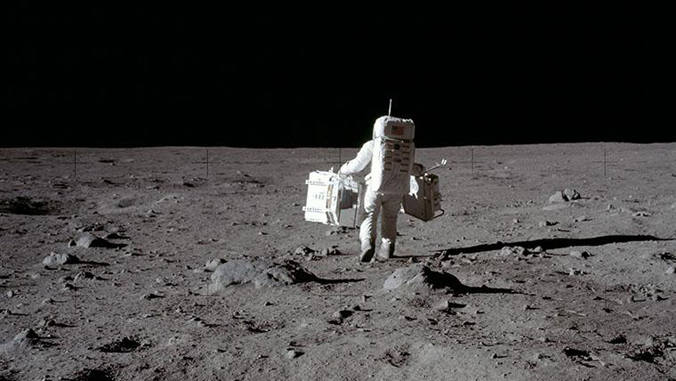
When humans go back to the Moon—and NASA plans to return by 2024—they will need water. For now, astronauts expect to bring their own. But future space explorers aim to take advantage of the water stored as ice, discovered at the Moon’s poles in shadowed regions.
A new team including researchers from the University of Hawaiʻi at Mānoa School of Ocean and Earth Science and Technology (SOEST) will investigate the origins and evolution of water and other volatiles on the Moon’s surface. The group is one of NASA’s eight new Solar System Exploration Research Virtual Institutes.

UH will receive a $2.7-million grant to be dispersed over five years with the investigation being led by Hope Ishii, research professor at SOEST’s Hawaiʻi Institute of Geophysics and Planetology. Other members of the UH team are Paul Lucey, John Bradley, Shuai Li, Tayro Acosta-Maeda and Barbara Bruno at UH Mānoa, and Heather Kaluna at UH Hilo, including several graduate students and postdoctoral researchers.
The Interdisciplinary Consortium for Evaluating Volatile Origins (ICE Five-O) grant will allow researchers to study the effects of interactions between lunar soil and simulants with volatiles at nanometer-length scales in the transmission electron microscope at UH’s Advanced Electron Microscopy Center—while controlling the temperature from the cryogenic conditions in permanently-shadowed regions to the warmer temperatures of sunlit regions.
“Revealing the source of the Moon’s water can, in turn, inform us about how the Earth got its water,” said Jeffrey Gillis-Davis, research associate professor of physics at Washington University in St. Louis and principal investigator of the ICE Five-O team. “If we see that the water wasn’t sourced entirely from lunar volcanoes—that it was delivered later—then it would be a strong indicator that Earth’s oceans formed at least in part by water delivered after Earth’s formation, rather than during its accretion in the early solar system.”
This will allow researchers to study the effects of space weathering in the harsh environment. Ions streaming from the sun and high-velocity dust-sized particles release huge amounts of energy that transform lunar minerals into glass and can destroy ice, or lead to chemical processes.
“Studying the effects of volatiles and space weathering on the minerals, glasses and organics in the Moon’s soil will ultimately contribute to our ability to trace volatiles backwards to their sources,” said Ishii.
For more on the story, see SOEST’s website.
—By Marcie Grabowski

